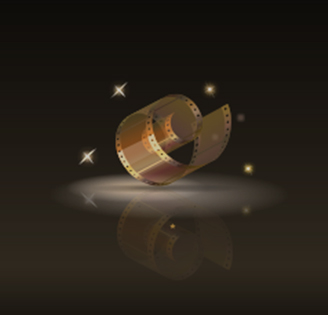
The Art of Making Short Films: Mastering Storytelling
We’re all familiar with the grand spectacle of feature films – the sprawling narratives, the epic budgets, the months-long productions. But there exists another, equally compelling realm of cinema: the world of short films. These concise cinematic gems, often clocking in under 40 minutes, possess a distinct allure that sets them apart. They’re not simply scaled-down versions of their longer counterparts; rather, they’re an entirely different art form, with their own unique strengths and creative possibilities.
What makes short films so popular?
Short films often excel at exploring singular themes, dissecting specific moments, or presenting nuanced character portraits without the need for extended exposition. Their brevity allows for greater experimentation – filmmakers are often freer to take risks with style, narrative structure, and subject matter, as seen in Royal Stag Barrel Select Shorts. Today, film festivals, online platforms, and even social media have given short films a vibrant and easily discoverable landscape.
Furthermore, the accessibility of short films contributes to their popularity. They’re easier to consume by audiences living incredibly busy lives. So, with that in mind, we begin our discussion about the fascinating and complex art of short filmmaking.
Learning to make unique short films
In the condensed format of a short film, the art of storytelling becomes even more crucial and precise. With limited time to engage the audience, every scene, every line of dialogue, and every visual detail must work to build a compelling narrative.
So, let’s explore the things that every short filmmaker relies on to create great experiences.
1. Relatable characters
In the world of short films, the characters you create are your most powerful tools. They are the vessels through which your story unfolds. The ability to see a piece of ourselves in the people on screen allows us to invest emotionally in their journeys. Relatable characters don’t have to be perfect; in fact, their flaws, insecurities, and quirks often make them even more compelling.
2. A strong opening
While relatable characters form the emotional heart of a film, a strong opening scene acts as its irresistible hook. Think of it as your first impression; it has to be striking and memorable. Especially considering how much the modern audience have become used to “thumb stopper” content, you must understand that within seconds, if your viewer is not interested, then you’ve likely lost them for good.
Short films, by their very nature, require a focused and efficient approach to storytelling, and a strong opening scene is paramount in this equation. The opening moments of a short film should be able to accomplish three things – introduce a setting, hint at a potential conflict and introduce a character or characters.
A great example is Sujoy Ghosh’s Ahalya. We’re introduced to a youngish-looking police officer, who is shown making his way to an old apartment building. The visual itself creates a sense of unease. Then, he rings a bell, and the door is opened by Radhika Apte, playing the titular character.
Here, several elements converge to create a strong opening: the combination of a suspenseful setting and an instantly recognisable actor generates immediate interest, leaving the viewer with just enough questions to want to continue watching. It’s a difficult task, but one that makes the best short films what they are – succinct and highly impactful.
3. Conflict resolution
Every compelling story relies on a well-defined narrative arc, the movement from a starting point to a destination. And at the heart of this movement lies conflict, the tension that propels the story forward and engages the viewer.
A short film’s condensed timeframe requires this tension to be established quickly and meaningfully. It is critical for not only piquing interest, but setting the stage for a meaningful resolution. A viewer usually expects some form of a closing and resolution by the end of the experience, an emotional crescendo and an understanding of what happened to those characters and their story arc.
Truly great short filmmakers excel at building up the crescendo of a narrative and then bringing it to a satisfying close within the constraints of their format. They understand how to escalate conflict, engage our emotions, and then deliver a conclusion that feels both natural and earned – without the end feeling rushed or jittery. This art is easier said than done.
Building this kind of skill takes time and a lot of practice. Aspiring short filmmakers must be avid watchers of the artform to learn from the many different approaches of established creators. Analyzing their storytelling techniques can offer valuable lessons in pacing, character development, and arc resolution.
By studying and appreciating the best in the field and trying to replicate these approaches, you can start developing your own voice in short filmmaking.
4. Visual storytelling
“Show, don’t tell” is a golden rule in filmmaking. With limited time to develop a complex narrative, every visual choice carries weight.
A truly effective short film masters the art of visual storytelling. This involves using images, compositions, lighting, and acting to convey emotions, ideas, and narrative information without relying heavily on exposition or lengthy conversations.
Sometimes, the most profound moments in a film are those that transcend language altogether. Once again, the short film Juice provides an excellent example of this.
While the opening of the film is largely dialogue-driven, the last few minutes shift entirely into the realm of visual storytelling. Here, words are no longer needed. The film’s emotional punch is delivered through the subtle nuances of the characters’ expressions, body language, and the way the camera frames them within their environment. We see the conflict and the resolution play out in the eyes of the actors and their actions and interactions, not via exposition. As viewers, we are completely engrossed, captivated by the power of what’s shown rather than what’s told. This is a masterclass in how to elicit an emotional response through the mastery of non-verbal communication.
This underscores the importance of focusing on visual storytelling in short films and how, sometimes, the most powerful moments are those that leave words behind.
5. An unforgettable ending
Unlike feature films, where there’s often a comfortable amount of time for a slow burn and a gradual conclusion, short films demand a focused and efficient approach, and the ending must be particularly potent. A weak or predictable ending can undo all the hard work that came before, while a well-executed one has the power to amplify the film’s impact. Ideally, the ending of your short should aim to provoke a reaction – whether it’s awe, excitement, dread, incredulity, or a potent mix of emotions.
The key is that the ending feels both organic to the story and impactful enough to resonate long after the credits roll. It should be a poignant punch that leaves the audience pondering the story’s message or characters, hours, maybe even days later. The magic is in eliciting that response in viewers, the desire to share the experience with others.
Start your journey
The world of short filmmaking is full of creative possibilities waiting to be explored. In this post, we explored some of the key elements that make these concise cinematic gems so powerful, but understanding these elements is just the beginning. The true learning comes from taking that leap of faith and starting your own journey into the world of short film creation. To help you along the way, we invite you to explore the Royal Stag Barrel Select Shorts website, blog, and YouTube channel, where we plan to build a treasure trove of inspiring content to fuel your creative journey.
In conclusion, whether you’re a budding filmmaker just starting out, or someone looking to further refine their craft, don’t be afraid to experiment, to take risks, and to learn from both your successes and your missteps.


